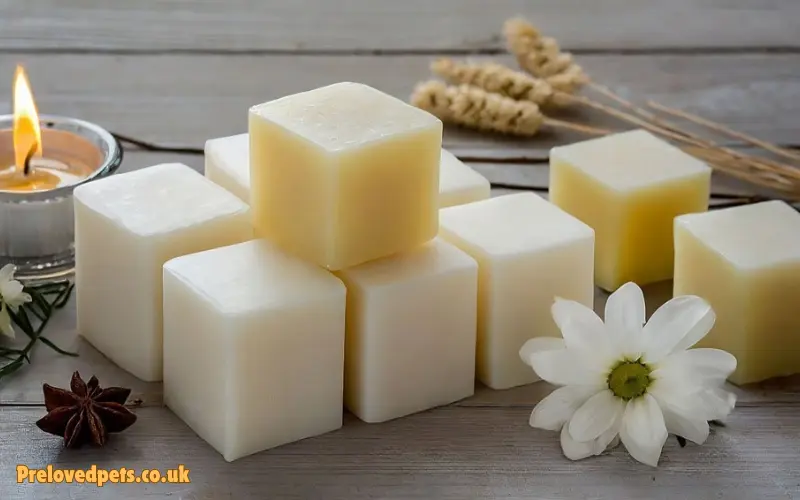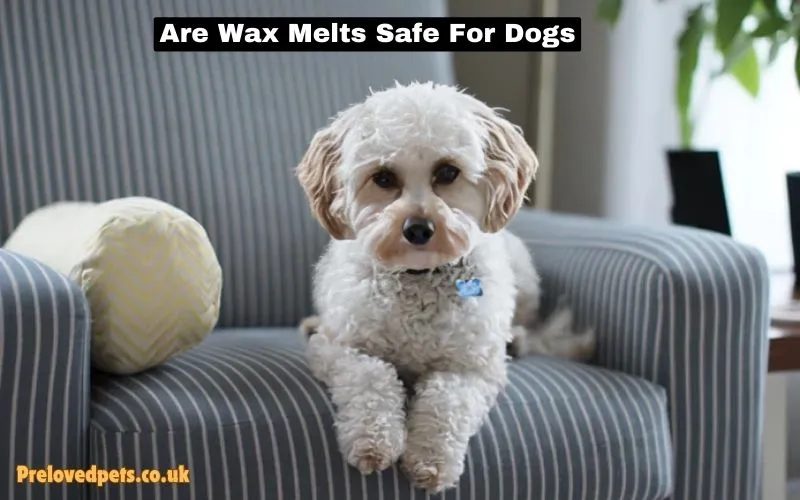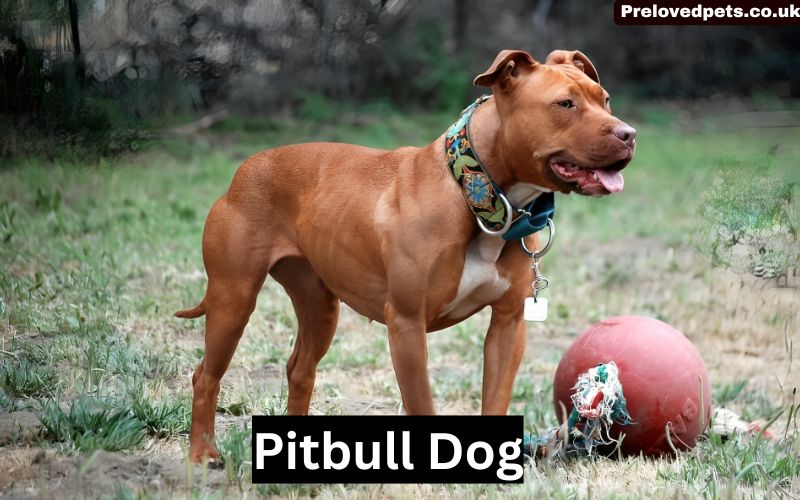As more households seek alternative ways to keep their homes smelling fresh, the popularity of wax melts has surged. But are wax melts safe for dogs? This is a crucial question for pet owners who want to ensure that their beloved companions remain healthy and happy while enjoying the benefits of these aromatic products. In this article, we will delve into the safety of wax melts for dogs, explore their potential hazards, and offer tips on how to use them safely around your furry friends.
Understanding Wax Melts
Wax melts are scented pieces of wax that, unlike candles, do not have a wick. They are designed to be heated in a special warmer, releasing their fragrance into the air without an open flame. Wax melts come in a variety of scents, shapes, and sizes, and are made from different types of waxes such as paraffin, soy, beeswax, and palm.
Composition of Wax Melts
The primary components of wax melts are wax and fragrance oils. Some may also contain dyes and other additives to enhance their appearance and scent throw. The type of wax and the ingredients used can influence the safety of the product for pets.
- Paraffin Wax: This is the most common type of wax used in wax melts. It is a byproduct of petroleum and can release potentially harmful chemicals when heated. Paraffin wax can produce soot and carcinogens like benzene and toluene, which are not only harmful to pets but also to humans, particularly when used frequently in confined spaces.
- Soy Wax: Made from soybean oil, soy wax is a popular natural alternative. It is biodegradable and burns cleaner than paraffin. Soy wax emits less soot and fewer chemicals, making it a better choice for a healthier indoor environment.
- Beeswax: Derived from bees, this natural wax has air-purifying properties and is considered safer for pets and humans. Beeswax can help reduce indoor pollutants by producing negative ions that bind to toxins, removing them from the air. It also burns more slowly and cleanly than paraffin wax.
- Palm Wax: Made from palm oil, this wax is also a natural option but comes with environmental concerns related to deforestation. Palm wax can offer a hard, long-lasting burn, but the environmental impact and potential ethical issues of palm oil production may be a consideration for environmentally-conscious consumers.
Fragrance Oils
Fragrance oils in wax melts can be synthetic or natural. While synthetic fragrances can produce stronger and longer-lasting scents, they may contain chemicals that could be harmful to pets. Natural fragrances, derived from essential oils, are generally considered safer but can still pose risks, especially if your pet has sensitivities or allergies.
- Synthetic Fragrances: These are man-made and can contain a mix of different chemicals to mimic natural scents. They can be more potent and longer-lasting but may also contain phthalates and other potentially harmful compounds that can affect indoor air quality and potentially harm pets.
- Natural Fragrances: Derived from plants, these include essential oils which can be safer but are not without risks. Some essential oils, such as tea tree, eucalyptus, and citrus oils, can be toxic to dogs, causing symptoms ranging from skin irritation to neurological issues.
Potential Hazards of Wax Melts for Dogs
While wax melts can create a pleasant ambiance in your home, they can also pose several risks to dogs if not used properly. Understanding these hazards is crucial for ensuring your pet’s safety.

Inhalation of Fumes
When wax melts are heated, they release volatile organic compounds (VOCs) and other chemicals into the air. These can include benzene, toluene, and formaldehyde, which are known to cause respiratory issues in both humans and animals. Dogs have a more sensitive respiratory system compared to humans, making them more susceptible to the harmful effects of these fumes.
- Short-term Exposure: This can cause symptoms like coughing, sneezing, eye, nose, and throat irritation. In more severe cases, it can lead to difficulty breathing, especially in dogs with pre-existing respiratory conditions like asthma or bronchitis.
- Long-term Exposure: Chronic exposure to VOCs can lead to more serious health issues such as liver and kidney damage, as well as an increased risk of cancer. The cumulative effect of these chemicals can have a significant impact on your dog’s overall health.
Ingestion of Wax Melts
Dogs are naturally curious and may be tempted to chew on wax melts, especially if they have a pleasant smell. Ingesting wax melts can lead to gastrointestinal issues such as vomiting, diarrhea, and in severe cases, intestinal blockages. Some of the chemicals in wax melts can also be toxic if consumed, leading to more serious health problems.
- Gastrointestinal Obstruction: Ingested wax can solidify in the digestive tract, causing a blockage that may require surgical intervention. Symptoms of obstruction include severe abdominal pain, persistent vomiting, and refusal to eat.
- Toxicity: The ingestion of certain fragrance oils or additives can be toxic. Symptoms of toxicity may include drooling, lethargy, tremors, and seizures, depending on the substance and quantity ingested.
Skin and Eye Irritation
Direct contact with the wax or the fragrance oils can cause skin and eye irritation in dogs. This can happen if your dog comes into contact with the wax melt warmer or if they accidentally knock over the warmer and get wax on their fur or skin.
- Skin Contact: Can cause redness, swelling, and itching. In some cases, it might lead to more severe reactions like blisters or burns if the wax is hot.
- Eye Contact: Exposure to fragrance oils can cause irritation, redness, and watering of the eyes. In severe cases, it could lead to corneal damage or ulcers if not treated promptly.
Allergic Reactions
Dogs can have allergies to certain scents or ingredients in wax melts. Symptoms of an allergic reaction can include sneezing, coughing, itching, and skin rashes. If you notice any of these signs after using a wax melt, it is best to discontinue its use and consult your veterinarian.
- Respiratory Allergies: Similar to human allergies, dogs can develop respiratory symptoms like wheezing, sneezing, and difficulty breathing when exposed to allergens.
- Dermatological Allergies: Skin reactions can manifest as itching, hives, and redness. Continuous scratching can lead to secondary infections.
Tips for Using Wax Melts Safely Around Dogs
Despite the potential hazards, it is possible to use wax melts safely around dogs by taking some precautions. Here are some tips to help you enjoy the benefits of wax melts without compromising your pet’s health.
Choose Pet-Safe Products
When shopping for wax melts, look for products specifically labeled as pet-safe or non-toxic. These products are formulated with ingredients that are less likely to cause harm to your pets. Opt for wax melts made from natural waxes like soy or beeswax and those with natural fragrances.
- Read Labels Carefully: Look for detailed ingredient lists and avoid products that contain known toxins or harmful chemicals. Some brands offer pet-specific lines that ensure safety.
- Research Brands: Look for reputable brands with good reviews from other pet owners. Companies that prioritize transparency about their ingredients and safety testing can be more reliable.
Use in Well-Ventilated Areas
Ensure that the room where you use wax melts is well-ventilated. Good airflow helps disperse any potentially harmful fumes and reduces the concentration of VOCs in the air. Open windows or use fans to improve ventilation while the wax melts are in use.
- Ventilation Tips: Regularly airing out your home can significantly reduce indoor air pollutants. Use air purifiers with HEPA filters to capture airborne particles and maintain a healthy environment.
- Location: Place the wax melt warmer in a part of the room where there is good airflow but out of direct drafts which could knock it over.
Keep Out of Reach
Place your wax melt warmer in a location that is out of reach of your dog. This prevents them from accidentally knocking it over or coming into direct contact with the hot wax. Consider using a wall-mounted or high shelf warmer to keep it safely away from your pet.
- Strategic Placement: Avoid placing the warmer on low tables or shelves where curious dogs might explore. Elevated spots like mantels or high bookshelves can be safer options.
- Stability: Ensure the warmer is on a stable surface to prevent tipping. Use additional anchors if necessary.
Monitor Your Dog’s Behavior
Pay attention to any changes in your dog’s behavior when you use wax melts. If you notice signs of respiratory distress, skin irritation, or gastrointestinal issues, discontinue use immediately and consult your veterinarian. It’s important to act quickly to prevent any serious health problems.
- Behavioral Signs: Look for symptoms like excessive licking, scratching, sneezing, coughing, or changes in eating and drinking habits. Early detection can prevent more severe reactions.
- Health Records: Keep a log of any adverse reactions and share this information with your vet to help identify potential allergens or irritants.
Avoid Using Wax Melts with Known Allergens
If your dog has known allergies, avoid using wax melts that contain ingredients that could trigger a reaction. This includes certain essential oils and synthetic fragrances. When in doubt, consult your veterinarian for advice on safe scents for your pet.
- Essential Oils to Avoid: Oils like tea tree, cinnamon, citrus, peppermint, pine, and ylang-ylang are commonly toxic to dogs. Stick to pet-safe oils like lavender, chamomile, and cedarwood, but still use them sparingly and with caution.
- Testing New Products: When introducing a new wax melt, observe your dog closely for the first 24-48 hours for any signs of allergies or sensitivities.
Regularly Clean the Warmer
Regularly cleaning your wax melt warmer helps prevent the buildup of residue that could emit harmful fumes. Follow the manufacturer’s instructions for cleaning and maintenance to ensure the warmer is functioning properly and safely.
- Cleaning Tips: Use a soft cloth and mild soap to clean the warmer. Avoid abrasive cleaners or tools that could damage the surface. Ensure the warmer is completely cool before cleaning.
- Maintenance: Regularly check for any signs of damage or wear. Replace the warmer if it shows signs of malfunction to prevent accidents.
Alternative Ways to Freshen Your Home
If you are concerned about the potential risks of wax melts, there are alternative ways to keep your home smelling fresh without compromising your dog’s health.
Natural Air Fresheners
Consider using natural air fresheners like baking soda, activated charcoal, or houseplants that help purify the air. These options are safe for pets and can effectively eliminate odors without the use of chemicals.
- Baking Soda: Place open boxes or bowls of baking soda around the house to absorb odors. You can also sprinkle it on carpets and vacuum it up for a fresh scent.
- Activated Charcoal: Charcoal filters and bags can help remove odors and pollutants from the air. They are effective and safe for pets.
- Houseplants: Certain plants like spider plants, Boston ferns, and peace lilies can help clean the air naturally. Ensure the plants you choose are non-toxic to pets.
Essential Oil Diffusers
While some essential oils can be harmful to dogs, there are pet-safe options available. Use an essential oil diffuser with caution, choosing oils that are known to be safe for dogs and ensuring the room is well-ventilated. Always consult your veterinarian before introducing new scents into your home.
- Pet-Safe Oils: Oils like lavender, chamomile, and cedarwood are generally considered safe in small amounts. Use a high-quality diffuser to ensure even distribution and avoid overuse.
- Diffuser Placement: Place the diffuser in a high, well-ventilated area out of your dog’s reach. Monitor your dog for any adverse reactions, especially when using new oils.
Simmer Pots
Simmering a pot of water with natural ingredients like citrus peels, cinnamon sticks, and cloves can create a pleasant aroma without the use of wax melts. This method is safe for pets and allows you to control the ingredients used.
- Recipe Ideas: Combine slices of lemon, orange, or lime with herbs like rosemary or thyme for a fresh scent. For a cozy aroma, simmer apple slices with cinnamon sticks and cloves.
- Usage Tips: Simmer on low heat and ensure there is always enough water in the pot to prevent burning. Never leave the simmer pot unattended.
Regular Cleaning
Regularly cleaning your home, especially areas where odors tend to accumulate, can help keep it smelling fresh. Vacuum carpets, wash pet bedding, and clean litter boxes frequently to minimize unwanted smells.
- Carpet Cleaning: Use a pet-safe carpet cleaner to remove odors and stains. Regularly vacuuming can also help reduce pet hair and dander, which contribute to odors.
- Pet Bedding: Wash your dog’s bedding and toys regularly using pet-safe detergent. Clean their sleeping areas frequently to keep them fresh.
- Litter Boxes: For households with cats, keep litter boxes clean by scooping daily and changing the litter regularly. Use odor-absorbing litter or baking soda to help control smells.
Conclusion
So, are wax melts safe for dogs? The answer depends on several factors, including the ingredients used in the wax melts and how they are used in your home. While there are potential risks associated with wax melts, taking the necessary precautions can help minimize these dangers and allow you to enjoy the benefits of a pleasantly scented home without compromising your pet’s health.
By choosing pet-safe products, using wax melts in well-ventilated areas, keeping them out of your dog’s reach, and monitoring your pet’s behavior, you can create a safe environment for your furry friend. Additionally, exploring alternative methods to freshen your home can provide peace of mind and ensure your dog’s well-being.
Always consult your veterinarian if you have any concerns about using wax melts or other scented products around your pets. Your veterinarian can provide personalized advice and help you make informed decisions to keep your home safe and comfortable for everyone, including your beloved dog.




